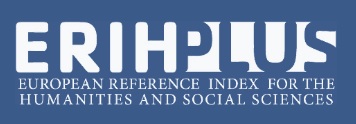M. V. Tereshinaa, S. G. Tyaglovb, E. V. Atamasa. Circular Economy in Agricultural Production: Potential for Implementation in New Institutional Conditions
https://doi.org/10.15507/2413-1407.129.032.202404.635-652
УДК / UDC 338.43:351
Abstract
Introduction. The concept of circular agricultural production is a promising trend for ensuring food security and reducing current negative environmental effects. The aim of the study is to analyse the prospects for the development of a circular economy in the agricultural sector of the Krasnodar Territory in the new institutional environment.
Materials and Methods. The research process used the methods of critical analysis of modern literature, analysis of official statistical data, regulatory and programme documents that form the institutional framework for the development of closed-loop economy in agriculture. The main regulatory and program documents influencing the current and future institutional transformations of a circular economy in agriculture and the valorization of generated agricultural waste are analyzed.
Results. The differential characteristics of the concept of circular agricultural production are determined; the basic principles and limitations of a circular economy in agriculture are highlighted, as well as the benefits and costs of a circular transition in agriculture. Some specific characteristics of agricultural production in Krasnodar Territory are described, which determine the priority of implementing circular practices.
Discussion and Conclusions. It has been revealed that the emerging model for managing the circular transition in agricultural production in our country has a “top-down” character with the determining role of governmental institutions. This model has both undeniable advantages and areas of deficiency. The transformation of the characteristics of this model will occur under the influence of the specific characteristics of Russian regions. The results of the study are important for executive authorities and business structures for the institutional design of the introduction of circular economy in the agricultural sector of the Krasnodar Territory and other agricultural regions.
Keywords: circular economy, agricultural production, circular production, institutional conditions, Krasnodar Territory economy
Conflict of interests. The authors declare no conflict of interest.
Funding. The research is carried out with the financial support of the Russian Science Foundation and Kuban Science Foundation within the framework of the scientific project 2024 “Conducting fundamental scientific research and exploratory scientific research by individual scientific groups” (regional competition), project No. 24-18-20049 “Regional circular economy system: institutional models and development technologies (the case of Krasnodar Territory)” (https://rscf.ru/project/24-18-20049/).
For citation: Tereshina M.V., Tyaglov S.G., Atamas E.V. Circular Economy in Agricultural Production: Potential for Implementation in New Institutional Conditions. Russian Journal of Regional Studies. 2024;32(4):635–652. https://doi.org/10.15507/2413-1407.129.032.202404.635-652
REFERENCES
1. Ghisellini P., Cialani C., Ulgiati S. A Review on Circular Economy: The Expected Transition to a Balanced Interplay of Environmental and Economic Systems. Journal of Cleaner Production. 2016;114:11–32. https://doi.org/10.1016/j.jclepro.2015.09.007
2. Rybasova Yu.V., Cherednichenko O.A. Models of the Closed Cycle in the Agrarian Economic Sector: From the Theory to Practice. Bulletin NGIEI. 2016;(11):99‒108. (In Russ.) Available at: https://vestnik.ngiei.ru/?page_id=1432 (accessed 12.04.2024).
3. Kuznetsova N.A. Circular Economy: Basic Elements and Opportunities. High-tech Enterprises Economy. 2023;4(2):121–132. (In Russ., abstract in Eng.) https://doi.org/10.18334/evp.4.2.117359
4. Selvan T., Panmei L., Murasing K.K., Guleria V., Ramesh K.R., Bhardwaj D.R., et al. Circular Economy in Agriculture: Unleashing the Potential of Integrated Organic Farming for Food Security and Sustainable Development. Frontiers in Sustainable Food Systems. 2023;7. https://doi.org/10.3389/fsufs.2023.1170380
5. Aznar-Sánchez J.A., Velasco-Muñoz J.F., García-Arca D., López-Felices B. Identification of Opportunities for Applying the Circular Economy to Intensive Agriculture in Almería (South-East Spain). Agronomy. 2020;10:1499. https://doi.org/10.3390/agronomy10101499
6. Agapkin A.M., Makhotina I.A. Agricultural Waste Processing: Organic Fertilizer Market and Organic Food Production. Storage and Processing of Farm Products. 2021;(3):212‒225. (In Russ., abstract in Eng.) https://doi.org/10.36107/spfp.2021.221
7. Babla M., Katwal U., Yong M.T., Jahandari S., Rahme M., Chen Z.H., Tao Z. Value-Added Products as Soil Conditioners for Sustainable Agriculture. Resources, Conservation and Recycling. 2022;178:106079. https://doi.org/10.1016/j.resconrec.2021.106079
8. Hsu E. Cost-Benefit Analysis for Recycling of Agricultural Wastes in Taiwan. Waste Management. 2021;120:424–432. https://doi.org/10.1016/J.WASMAN.2020.09.051
9. Makrak S. Smart-system Management of Material Resources in Conditions of Circular Agricultural Economy Development in the Republic of Belarus. The Science and Innovations. 2020;(7):73‒78. (In Russ., abstract in Eng.) Available at: http://innosfera.by/files/2020/8.pdf (accessed 17.04.2024).
10. Silvius J., Hoogstra A.G., Candel J.J.L., et al. Determining the Transformative Potential of Circular Agriculture Initiatives. Ambio. 2023;52:1968–1980. https://doi.org/10.1007/s13280-023-01894-5
11. Chupin A.L., Mizintceva M.F., Chupina Zh.S. Building a Circular Economy: Social Economy Theory, its Potential and Challenges. The Eurasian Scientific Journal. 2023;15(6). (In Russ., abstract in Eng.) Available at: https://esj.today/PDF/63ECVN623.pdf (accessed 12.02.2024).
12. Valeeva Yu.S., Galimova E.I., Garipova G.R. Implementation of the Principles and Mechanisms of the Circular Economy in the Agro-Industrial Complex. Bulletin NGIEI. 2023;(7):72–89. (In Russ.) Available at: http://vestnik.ngiei.ru/?page_id=2265 (accessed 12.04.2024).
13. Bukhtiyarova T.I., Baturina I.N., Kutenina I.A. Convergent Approach to the Formation of Regional Agricultural Ecosystem. Proceedings of Voronezh State University. Series: Economics and Management. 2023;(3):33–45. https://doi.org/10.17308/econ.2023.3/11378
14. Dzhandarova L.K. Application of Circular Economy Business Models in Agriculture. The Journal of Applied Research. 2022;(12):57‒61. (In Russ., abstract in Eng.) https://doi.org/10.47576/2712-7516_2022_12_57
15. Bekmurzaeva R.Kh., Dzhandarova L.Kh The System of Indicators for Assessing the Effectiveness of Strategies of the Circular Economy in the Agricultural Sector. Industrial Economics. 2021;(5-3):277‒281. (In Russ., abstract in Eng.) https://doi.org/10.47576/2712-7559_2021_5_3_277
16. Mochalova L.A., Sokolova O.G., Polezhaeva M.V., Grinenko D.A. Institutional Conditions for Solving Problems in the Field of Waste Management of Production and Consumption. Upravlenie tekhnosferoy. 2020;3(2):159‒179. (In Russ., abstract in Eng.) https://doi.org/10.34828/UdSU.2020.85.39.001
17. Nikonets O.E. The Model of Sustainable Development of the Agro-Industrial Complex. Bulletin of NGIEI. 2023;(6):116‒128. (In Russ.) Available at: https://cyberleninka.ru/article/n/model-ustoychivogo-razvitiya-apk (accessed 17.08.2024).
18. Prodanova N.A., Savin A.A., Kosnikov S.N., Sorgutov I.V. Conceptual Approaches to the Development of the Agricultural Sector in Terms of the Closed-Cycle Economy. Siberian Journal of Life Sciences and Agriculture. 2021;13(3):321‒331. https://doi.org/10.12731/2658-6649-2021-13-3-321-331
19. Makarenko E.N., Tyaglov S.G., Sheveleva A.V. Involvement in the Economic Circulation of Production Waste: Russian and European Experience. Russian Journal of Regional Studies. 2023;31(2):313–334. (In Russ., abstract in Eng.) https://doi.org/10.15507/2413-1407.123.031.202302.313-334
20. Burg V., Rolli C., Schnorf V., Scharfy D., Anspach V., Bowman G. Agricultural Biogas Plants as a Hub to Foster Circular Economy and Bioenergy: An Assessment Using Substance and Energy Flow Analysis. Resources, Conservation and Recycling. 2023;190:106770. https://doi.org/10.1016/j.resconrec.2022.106770
21. Lainez M., González J.M., Aguilar A., Carmen V. Spanish Strategy on Bioeconomy: Towards a Knowledge Based Sustainable Innovation. New Biotechnology. 2017;40(A):87‒95. https://doi.org/10.1016/j.nbt.2017.05.006
22. Bobylev S.N., Mikhailova S.Yu., Kiryushin P.A. Bio-Economics: Challenges of Development. Ekonomika. Nalogi. Pravo. 2014;(6):20‒26. (In Russ.) Available at: https://cyberleninka.ru/article/n/bioekonomika-problemy-stanovleniya.pdf (accessed 12.04.2024).
23. Fisunova L.V., Vishnevskaya A.V. Analysis of the Possibilities of Utilization and Processing of Agricultural Waste. Izvestiya Orenburg State Agrarian University. 2022;(5):232‒236. (In Russ., abstract in Eng.) Available at: https://cyberleninka.ru/article/n/analiz-vozmozhnostey-utilizatsii-i-pererabotki-selskohozyaystvennyh-othodov (accessed 12.04.2024).
24. Velasco-Muñoz J.F., Mendoza J.M.F., Aznar-Sánchez J.A., Gallego-Schmid A. Circular Economy Implementation in the Agricultural Sector: Definition, Strategies and Indicators. Resources, Conservation and Recycling. 2021;170:105618. https://doi.org/10.1016/j.resconrec.2021.105618
25. Donner M., de Vries H. How to Innovate Business Models for a Circular Bio-Economy? Business Strategy and the Environment. 2021;30(4):1932–1947. https://doi.org/10.1002/bse.2725
26. Andreenko T.I., Kiseleva S.V., Rafikova Yu.Yu. Cereals Waste in the Krasnodar Region as a Local Heat Energy Resource. RUDN Journal of Ecology and Life Safety. 2022;30(4):511–523. (In Russ., abstract in Eng.) http://doi.org/10.22363/2313-2310-2022-30-4-511-523
27. Zink T., Geyer R. Circular Economy Rebound. Journal of Industrial Ecology. 2017;21(3):593‒602. https://doi.org/10.1111/jiec.12545
28. Ngoc Hong Ngia, Zenitova L.A., Le Kuang Zien. Complex Processing of Rice Production Waste with Simultaneous Production of Silicon Dioxide, Lignin and Cellulose. Problems of Regional Ecology. 2019;(2):5‒11. (In Russ., abstract in Eng.) http://doi.org/10.24411/1728-323X-2019-12005
About the authors:
Maria V. Tereshina, Dr.Sci. (Econ.), Associate Professor, Professor of the Chair of Public Policy and Public Administration, Kuban State University (149 Stavropolskaya St., Krasnodar 350040, Russian Federation), ORCID: https://orcid.org/0000-0001-8982-5831, Researcher ID: U-2650-2019, Scopus ID: 57202647649, SPIN-code: 8105-7488, mwstepanova@mail.ru
Sergey G. Tyaglov, Dr.Sci. (Econ.), Professor, Chair of Regional Economy, Industries and Enterprises, Rostov State University of Economics (69 Bolshaya Sadovaya St., Rostov-on-Don 344002, Russian Federation), ORCID: https://orcid.org/0000-0002-8729-5117, Researcher ID: AAA-9728-2021, Scopus ID: 57189035954, SPIN-code: 9777-9061, tyaglov-sg@rambler.ru
Evgeniya V. Atamas, Cand.Sci. (Econ.), Associate Professor, Associate Professor of the Chair of Public Policy and Public Administration, Kuban State University (149 Stavropolskaya St., Krasnodar 350040, Russian Federation), ORCID: https://orcid.org/0000-0002-5652-5530, Researcher ID: V-1246-2017, Scopus ID: 57220836449, SPIN-code: 8966-7038, eatamas@bk.ru
Contribution of the authors:
M. V. Tereshina – statement of the research problem; data analysis; preparation of the text of the article; formulation of research results and conclusions.
S. G. Tyaglov – preparation of the text of the article; formulation of research results and conclusions.
E. V. Atamas – preparation of the text of the article; formulation of conclusions; critical analysis and revision of the text.
Availability of data and materials. The datasets used and/or analyzed during the current study are available from the authors on reasonable request.
The authors have read and approved the final manuscript.
Submitted 27.05.2024; revised 18.07.2024; accepted 12.09.2024.

All the materials of the "REGIONOLOGY" journal are available under Creative Commons «Attribution» 4.0
















